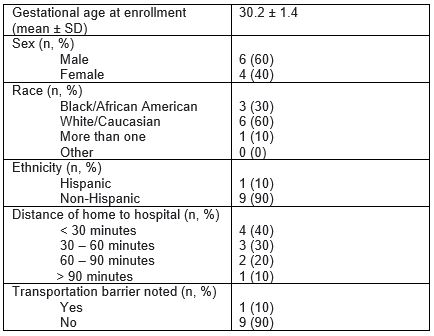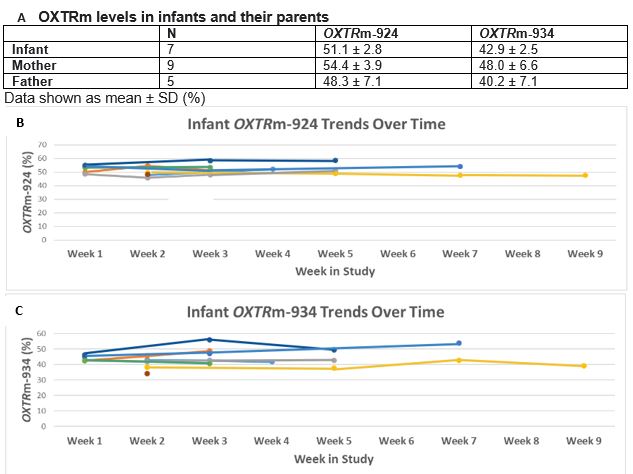Neonatology
Session: Neonatal General 1: NICU Care
50 - Impact of Parent Speech on the Endogenous Oxytocin System of Preterm Infants
Friday, May 3, 2024
5:15 PM - 7:15 PM ET
Poster Number: 50
Publication Number: 50.556
Publication Number: 50.556

Kelsey Sullivan, MD, FAAP (she/her/hers)
Neonatal-Perinatal Fellow
University of Virginia Health Systems
Charlottesville, Virginia, United States
Presenting Author(s)
Background: Children born preterm are at increased risk of abnormal neurodevelopment including a 2-fold increased risk of autism spectrum disorders. Abnormal development of the endogenous oxytocin system may represent one of the underlying mechanisms of increased risk. Specifically, DNA methylation of the oxytocin receptor gene (OXTRm) has been shown to decrease with increased maternal engagement and is associated with improved social skills at 18-24 months in children born at term gestation. Whether alterations in OXTRm occur postnatally in preterm infants and are correlated with parental engagement is unknown.
Objective: To study the postnatal plasticity of OXTRm in very preterm infants ( < 33 weeks’ gestational age (GA)) and correlate changes with presence at bedside and word count as a surrogate marker of parental engagement.
Design/Methods: Ongoing single-center, prospective longitudinal cohort pilot study enrolling preterm infants and parents in the first two weeks after birth. Saliva samples are collected in both infants and parents on enrollment, during week 3 of study participation, and prior to NICU discharge. Following DNA extraction, epigenotyping of the OXTR is performed to determine OXTRm levels. In addition, parents are instructed to visit and read to their infants whenever possible while recording these interactions using Language ENvironment Analysis (LENA) devices. OXTRm levels are correlated with parental word count using repeated measures analysis.
Results: Ten families to date have completed the study protocol (see Table 1 for cohort demographics). Baseline characteristics of OXTRm of preterm infants at two key sites, OXTRm-924 and OXTRm-934, are described in Figure 1. Repeated measures analysis of OXTRm compared to parental word count revealed that for every additional 1000 words spoken by parents there is a statistically significant decrease in OXTRm by 1.1% in OXTRm-924 and by 1.6% in OXTRm-934 (Table 2).
Conclusion(s): This study describes for the first time the postnatal evolution of OXTRm in very preterm infants, and these findings support the hypothesis that preterm infants demonstrate plasticity in OXTRm postnatally. Additionally, these data suggest that OXTRm can be influenced by parental word count. The apparent postnatal plasticity of OXTRm may represent a potential novel target for interventions to improve the social/behavioral outcomes of preterm infants. Data collection is ongoing to confirm these preliminary results.



